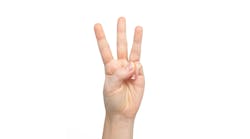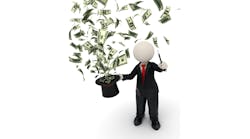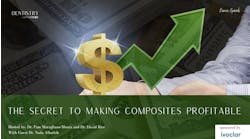For more on this topic, go to www.dentaleconomics.com and search using the following key words: U.S. Green Building Council, green dentistry, environment, Kevin Henry, LEED.
I recently had the chance to talk with Seana Patankar, an NCIDQ certified interior designer and LEED Accredited Professional, and a partner with Evoco Architecture/Interiors in San Francisco. San Francisco is among the leading cities when it comes to “going green,” and the city is among the leaders when it comes to helping dentists make their practices more environmentally friendly. To see what San Francisco is doing to help dental offices in the Bay Area, go to www.sfgreenbiz.org/files/Dental_Checklist.pdf.
Henry: What are some of the trends you are seeing with your clients?
Patankar: Thinking “green” is achieving a broad spectrum of interest these days. Not so long ago I sat in on an office design seminar and noticed that doctors were asking questions about how they could reduce their impact on the environment. The answer touches on everything from project demolition practices to the adhesives used in cabinetry. Thinking green suggests a new behavioral pattern between doctor and staff with a shared commitment to reducing the office environmental footprint. It is a marketing tool if the commitment is sincere. It can help support the bottom line with increased productivity, decreased absenteeism, and lowered utility bills. The government will soon step in with tax credits and regulation. Already, the U.S. Green Building Council LEED (Leadership in Energy & Environmental Design) certifies higher-performance green buildings, and there are many pilot projects and public/private partnerships underway. Thinking green is going mainstream.
Henry: Energy usage is obviously a major concern.
Patankar: Every year in the United States we use more energy than we did the year before, with our usage doubling almost every 20 years. Buildings use almost 40% of the energy and almost 70% of the electricity produced here annually. Lighting alone accounts for nearly half of energy usage in commercial buildings. Energy is not free, most of the energy sources we depend on cannot be replaced, and most forms of energy cause pollution. The Intergovernmental Panel on Climate Change (IPCC) released a report in November 2007 that identifies electricity as the single largest contributor to greenhouse gas emissions.
The simple goal should be to reduce energy usage in your office. The prevailing idea with energy usage is that you want to be able to control your usage to suit your needs and requirements at any particular time and use only what is needed.
Henry: What lasting words do you want to leave with our readers?
Patankar: Green design is being embraced, especially by the medical and dental profession, not just for its emphasis on natural products, but also for elements of energy efficiency.
Even as many other businesses and industries contract in uncertain economic times, green design is expanding not because it is trendy or faddish but because it offers credible and consistent health, safety and customer benefits. Simply put, thinking green is increasingly mainstream throughout the country.
Kevin Henry is DE’s managing editor and is becoming one of the nation’s experts and speakers on ways to become more environmentally conscious in the dental office. He can be reached at [email protected].
Ways you can save energy and money this week
- If you have not already done so, it is time to make the change to CFL (compact fluorescent lamp) bulbs. You should no longer be using incandescent fixtures.
- Install light fixtures with dimming capabilities so that you are not forced to maximize energy usage every time a fixture is turned on. The dimming of fluorescent fixtures is now possible.
- Install occupancy sensors that turn off light fixtures when a space is unoccupied.
- Make the most of the natural daylight in your office with skylights and windows. Daylight sensors can turn off lights automatically when adequate natural daylight levels are achieved. You can use films on your windows or light shelves to control glare while still allowing you to maximize the use of natural daylight.
- Get a programmable thermostat. It will help keep your office warm/cool when people are there and save power and money when people are not around.
- If you use a desktop, use an LCD monitor. It uses less energy than a CRT.
- Use laptops where possible. They use much less energy than desktops.





